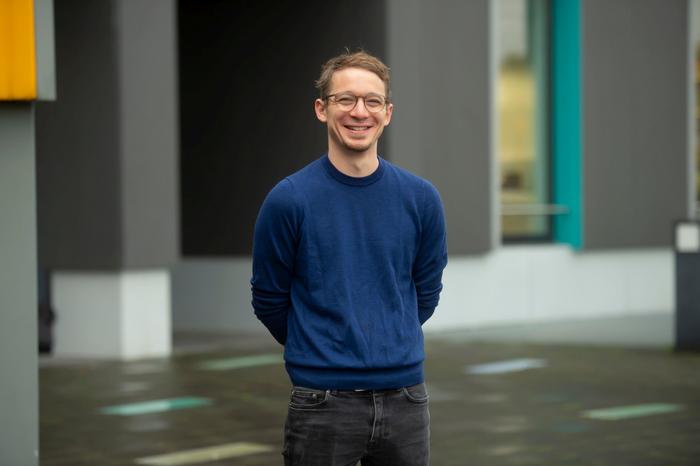Linking Space-Time Habits to Noise Exposure in Paris
Urban soundscapes are complex and dynamic environments where millions of inhabitants navigate daily, encountering a multitude of noise sources as they move through their cities. Traditionally, assessments of environmental noise exposure have relied heavily on static, year-averaged noise maps generated at the scale of residential neighborhoods. These strategic noise maps serve as valuable tools for […]


Urban soundscapes are complex and dynamic environments where millions of inhabitants navigate daily, encountering a multitude of noise sources as they move through their cities. Traditionally, assessments of environmental noise exposure have relied heavily on static, year-averaged noise maps generated at the scale of residential neighborhoods. These strategic noise maps serve as valuable tools for urban planners and public health experts, providing a broad overview of environmental noise levels within specific geographic boundaries. However, a recent groundbreaking study emerging from the Grand Paris area highlights a critical limitation of this approach: the underestimation of personal noise exposure due to the neglect of human mobility and the proximity of transient noise sources.
The research, conducted by Fancello, Can, Aumond, and colleagues, delves into the intricate relationship between individuals’ spatial-temporal behaviors and their corresponding noise exposure. By deploying innovative isotemporal substitution models, the study transcends traditional methodologies that treat noise exposure as a static phenomenon tethered solely to the home address. Instead, the researchers capture the fluidity of daily urban movement patterns and how these behaviors modulate cumulative noise exposure in nuanced ways. This pioneering approach challenges the conventional wisdom underlying urban noise assessment and opens new pathways for more accurate exposure estimations.
At the heart of this research lies the recognition that individuals do not remain confined to their residential neighborhoods. Modern urban life is characterized by continuous movement—commuting to work, visiting commercial areas, spending leisure time in parks, or running errands across various city sectors. Each microenvironment presents distinct acoustic profiles, fluctuating with time of day, traffic intensity, and the presence of transient noise generators such as construction sites or public events. This temporal-spatial heterogeneity is insufficiently captured by traditional noise mapping, which aggregates data over long periods and broad spatial units, often smoothing out critical spikes and lulls in noise intensity.
Isotemporal substitution models, as applied in the Grand Paris study, offer a sophisticated statistical framework to dissect the trade-offs between time spent in different urban environments and their consequent noise exposure impacts. By substituting equal durations spent across various locations, the model quantifies how shifting daily activities could increase or decrease an individual’s overall noise dose. This analytical lens provides unprecedented precision in identifying which behaviors or location choices most significantly influence personal exposure, thereby informing targeted mitigation strategies.
The implications of underestimating noise exposure are profound. Chronic noise pollution is widely recognized as a public health hazard, linked to cardiovascular diseases, sleep disturbances, cognitive impairment, and reduced overall quality of life. If exposure assessments fail to account for mobility-driven variations, public health initiatives may be misdirected, and vulnerable populations insufficiently protected. The findings from Grand Paris elucidate how mobility patterns can exacerbate noise exposure beyond residential estimates, underscoring the need to rethink exposure assessment frameworks in metropolitan contexts globally.
Importantly, the study integrates robust datasets from the Île-de-France region, leveraging detailed mobility tracking and high-resolution acoustic measurements. This integration permits a granular exploration of how individual behavioral choices intersect with the urban sound environment’s spatial and temporal variability. Unlike prior studies that often rely on self-reported activity logs or static noise indicators, this approach harnesses objective data streams, enhancing the reliability and validity of exposure estimates.
Additionally, the research situates itself at the crossroads of urban planning, environmental epidemiology, and data science. By elucidating the complex interplay between space-time behaviors and noise exposure, it provides actionable intelligence for city designers aiming to create healthier urban soundscapes. For instance, insights garnered could guide the strategic placement of green buffers, pedestrian pathways, or noise barriers, aligning urban form more closely with residents’ daily movement patterns and minimizing harmful exposures.
The study also surfaces the significant role of proximate noise sources—ephemeral sounds emanating from temporary construction, street-level activities, or transient traffic congestion—that disproportionately shape personal exposure yet remain invisible in annualized noise maps. Recognizing these contributors necessitates real-time or near-real-time monitoring systems integrated with mobility data, opening avenues for dynamic noise management in smart cities.
Furthermore, by embracing the isotemporal substitution methodology, the researchers demonstrate a scalable tool for policymakers and health researchers to simulate hypothetical behavior shifts and their impact on noise exposure. This modeling capacity empowers scenario analysis—evaluating, for instance, how promoting remote work or altering public transit routes might attenuate or amplify noise burdens among urban populations.
The Grand Paris research also prompts a reevaluation of epidemiological studies linking noise exposure to health outcomes. Utilizing static residential noise data may obscure or dilute dose-response relationships, especially when individuals’ daily itineraries expose them to substantially different acoustic environments. Enhanced exposure characterization through mobility-informed models could improve the accuracy of risk estimates and better identify susceptible subgroups.
A notable strength of the study is its innovative fusion of spatial data science with environmental health metrics, foregrounding a human-centric perspective in environmental noise research. This shift acknowledges that the lived experience of noise—and its health implications—cannot be disentangled from the rhythms and routes of everyday urban life. Capturing these dynamics enables a transition from reactive noise regulation toward proactive, context-sensitive management.
Moreover, the study underscores the urgency of incorporating temporal granularity into environmental noise policies. Traditional strategies, often based on annual mean noise levels, may fail to address critical exposure windows—such as rush hours or nighttime peaks—when noise disturbances exert the greatest physiological stress. Adopting temporally resolved models aligned with individuals’ behavioral patterns could inform more nuanced guidelines and intervention timing.
While the Grand Paris research presents a significant leap forward, it also lays bare challenges ahead. Scaling isotemporal substitution analyses requires extensive, high-resolution data on mobility and noise fields that may be unavailable in many urban settings. Privacy concerns surrounding personal movement tracking must be carefully navigated, balancing research utility with ethical safeguards. Furthermore, translating complex model outputs into accessible policy recommendations demands interdisciplinary collaboration among data scientists, health professionals, and urban planners.
In summary, this landmark study reframes environmental noise exposure assessment by embedding human mobility into the analytical frame, thereby revealing the hidden dimensions of urban acoustic burdens. Its implications ripple across public health surveillance, urban design, and personal well-being, advocating for a paradigm shift toward dynamic, individualized noise exposure modeling. As cities worldwide grapple with escalating environmental stressors, integrating space-time behavioral data offers a promising pathway to healthier and more livable urban futures.
The Grand Paris investigation exemplifies how advanced analytical methods combined with rich datasets can illuminate the nuanced realities of urban environmental exposures. Such innovative research underscores the vital importance of moving beyond static representations toward fluid, behaviorally informed insights capable of better protecting urban populations. As urban dwellers continue to negotiate multifaceted sound environments, scientific progress in this domain paves the way for smarter, more responsive noise mitigation policies attuned to the rhythms of everyday life.
Subject of Research: The relationship between space-time behaviors and personal environmental noise exposure in urban settings.
Article Title: Assessing the relationship between space-time behaviours and personal noise exposure using isotemporal substitution models in the Grand Paris area.
Article References:
Fancello, G., Can, A., Aumond, P. et al. Assessing the relationship between space-time behaviours and personal noise exposure using isotemporal substitution models in the Grand Paris area. J Expo Sci Environ Epidemiol (2025). https://doi.org/10.1038/s41370-025-00765-3
Image Credits: AI Generated
DOI: https://doi.org/10.1038/s41370-025-00765-3
Tags: cumulative noise exposuredynamic urban environmentsenvironmental noise mapping limitationsGrand Paris noise studyinnovative urban planningisotemporal substitution modelsnoise exposure assessmentpersonal noise exposurespatial-temporal behaviorstransient noise sourcesurban mobility and noiseurban soundscapes
What's Your Reaction?


































